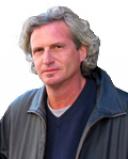Parapsychology
Is Death Just a Different Form of Consciousness?
The strange case of astronaut Edgar Mitchell.
Posted March 4, 2019
Even in the often woo-woo universe of the supernatural, the case of Edgar Mitchell, the lunar module commander of Apollo 14 and sixth human being to walk on the moon, was a strange one. While in space in February 1971, Mitchell had what he called a “peak experience,” a sudden feeling of euphoria mixed with immense fatigue or, in his own words, “a sense of being totally insignificant yet highly significant, an insight into the great pattern of control and divinity in the universe.” Mitchell (who was born in Roswell, New Mexico, and until his death in 2016 claimed UFOs had landed on Earth) decided then and there that merging Western science with our “untapped intuitive and psychic forces” could make a great contribution to society. This, he believed, could in fact serve to improve the chances of the Blue Planet’s survival.
Soon after he rather suddenly retired from NASA the following year, Mitchell founded a center for parapsychology, The Institute for Noetic Sciences (after nous, mind or consciousness in Greek). With his Palo Alto-based institute, Mitchell’s goal was to fuse “the objective, pragmatic modality of Western science and the subjective, intuitive approach of the great spiritual and religious doctrines,” an idea that some considered wacky and others way ahead of its time.
Mitchell’s interest in psychic phenomena had begun about five years earlier, after realizing that both religion and philosophy could not provide the kind of answers he was looking for in his search for the meaning of life. Not only was the Navy captain impressed with the quality of psychic research, but he found its scientific foundation surprisingly rational and substantial in explaining why humans had always viewed the physical world through a spiritual lens. “Death may simply be an altercation in consciousness, a transition for continued life in nonmaterial form,” he wrote in 1974, with psychic research showing that the mind could quite possibly operate independently of the body.
During the Apollo flight, NASA allowed Mitchell to conduct an unsanctioned ESP test with four persons back on Earth and so, during his scheduled rest periods, the astronaut indulged his personal interest in telepathy. Employing legendary parapsychology founder Joseph Rhine’s special deck of twenty-five “Zener” cards used to measure ESP, Mitchell sent a thought message to the unidentified people. (One was determined to be Olof Jonsson, a Swedish-born, Chicago-area drafting engineer and self-professed psychic.) The results? Mitchell claimed to achieve what was considered “extra chance performance” with two of the Earthlings, while getting a dud with the other two. Not only did Jonsson receive clear images of most of the cards, he announced, but the man reportedly felt some of the emotions of the astronauts in space, this perhaps the bigger story. Excited about the results, Mitchell made his way to Durham, North Carolina, to visit Rhine a few months later (Rhine’s lab had originally been at Duke University), convinced that ESP could one day be used somehow to make this world a better place.


